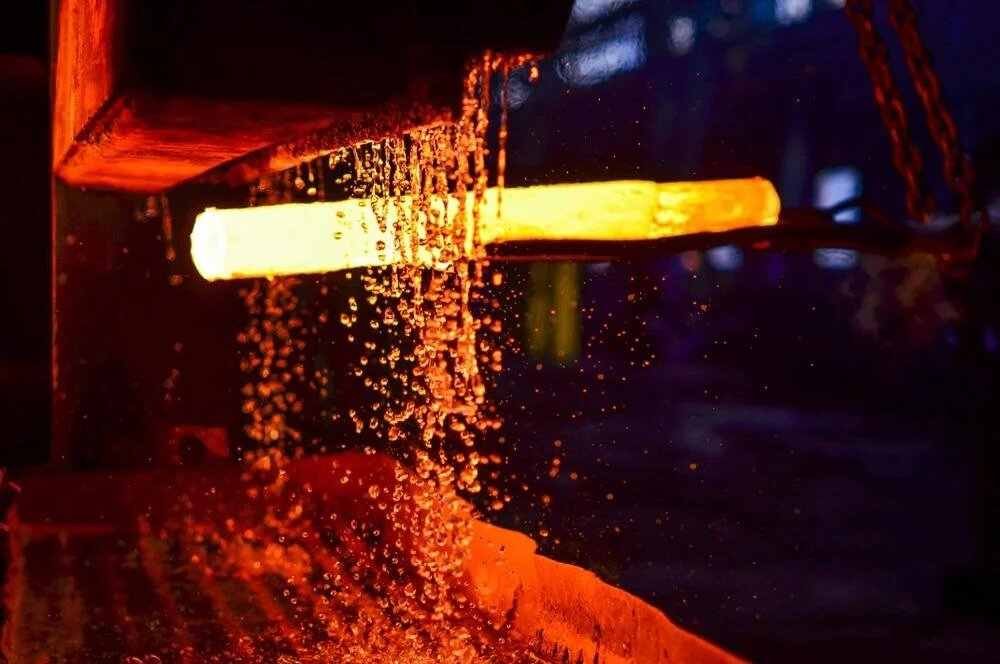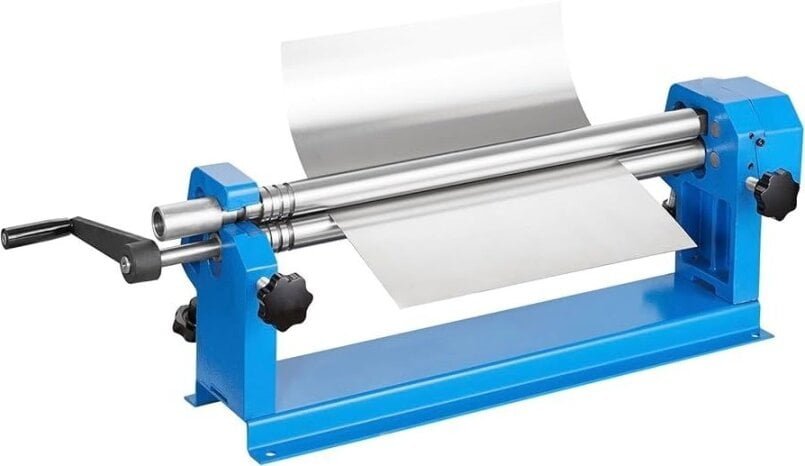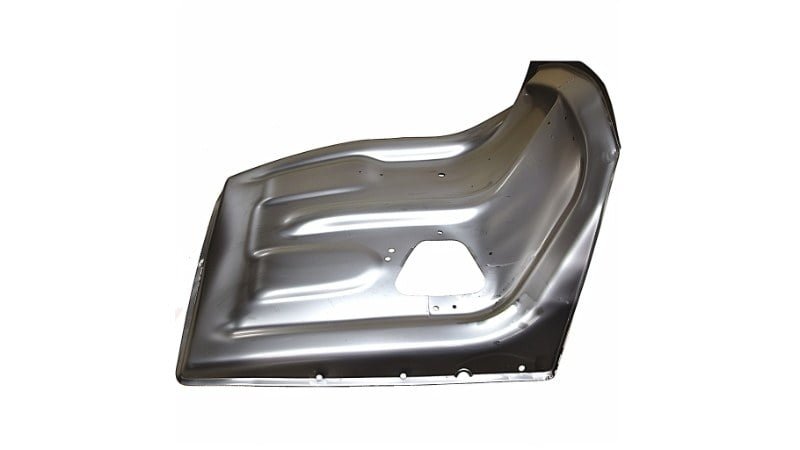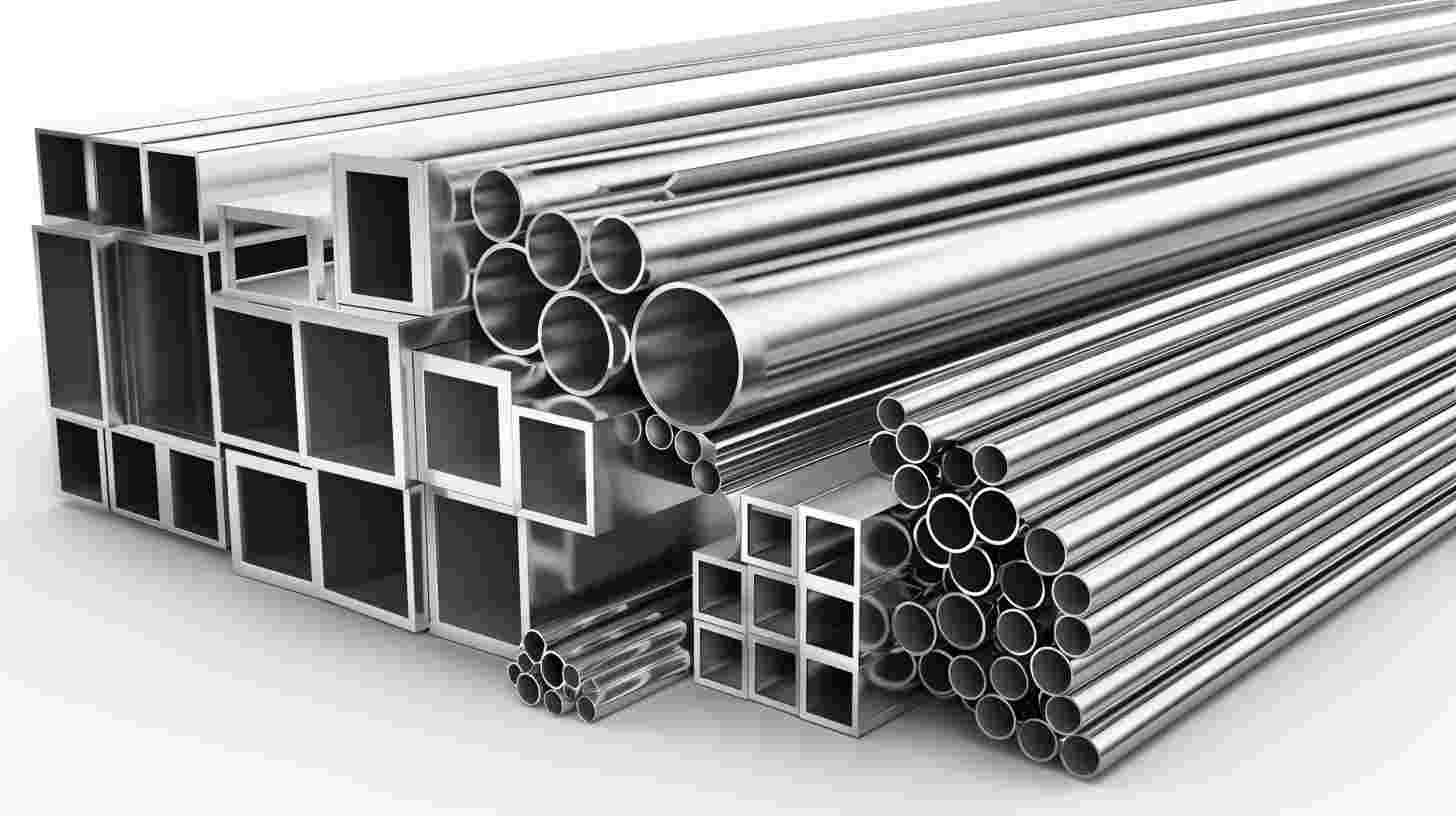We at Shengen take pride in our ability to understand the complexities of sheet metal fabrication. Brass finishes are popular with our customers, particularly Jack Garcia and those who expect the best. Why is it important? What makes it unique? I will delve into brass finishes to shed some light on their importance.
Brass finishes are surface treatments and coatings applied to brass to improve its durability, appearance, and resistance to outside factors. This process transforms the appearance and feel of brass components, giving them a distinctive shine or matte finish while protecting them against tarnishing and wearing.
Brass is a popular material among both manufacturers and artists. Its golden color and malleability make it a great choice. When you finish brass, it reveals its true beauty.
Brass Alloy: A Guide to Understanding
Brass is an ancient metal with a rich golden color and many versatile properties. It has played a significant role in human civilization over the millennia. We at Shengen are proud of our knowledge and expertise with this metal. I have always believed that sharing information is a powerful thing. Let’s dive into the composition of brass to understand its very foundation.
Composition: Zinc and Copper
Brass is a mixture of Copper and Zinc. What does this combination mean, and why is it so special?
- Copper: Copper is the main element in brass. It is known for its conductivity, malleability, and corrosion resistance. The reddish brown color of the brass alloy is due to copper. It also forms the base for other elements.
- Zinc: Copper is transformed into brass by the addition of zinc. Zinc changes the color, turning it yellower or more gold-like. It also affects the strength and flexibility of the alloy: the more zinc, the more yellow and more robust the brass.
Alloy Mixtures: Variations and Effects
Manufacturers create brasses using various ratios of copper and zinc. Nerves can have other properties depending on the variations.
- Alpha Brass: This type of brass contains less than 35% Zinc and is malleable and ideal for processes such as forging or drawing. The higher copper content gives it a pale yellow color.
- Beta brass: With a zinc content of between 45% and 50 %, beta brasses have a more complex surface and are more suitable for applications requiring strength. They have a darker yellow color.
- Red and Yellow Brass: “Yellow” and “red” are used colloquially to describe brasses with varying copper-to-zinc ratios. If you add more zinc to arrogance, the nerves appear yellower. In contrast, red brasses contain more copper and have a deeper reddish tone.
- Specialized alloys: Other elements such as lead, tin, or nickel can also be added to Brass to create unique properties. Lead, for example, can improve machinability, while nickel can increase corrosion resistance.
Brass finishes are available in different types.
As a malleable and versatile metal, brass offers many finishes to suit varying aesthetics and functional needs. Understanding the finishes of brass can be a big help, whether you are a newcomer or someone like Jack Garcia, who is a perfectionist. We’ll explore the different types of finishes for brass and see what makes them unique.
Polished Brass
This is the most popular finish we offer at Shengen.
Polished Brass has a bright, reflective, and mirror-like look. This is achieved by buffing brass to a high sheen. This finish enhances the natural golden color of brass and adds a touch of luxury to any product. Our aerospace and automotive clients prefer this finish because of its smooth feel and radiant look.
Satin Brass
Satin Brass combines the bright shine and matte finish of polished brass. A soft glow and a smooth texture characterize the satin finish. This satin finish is created by gently brushing the surface of brass to reduce its natural shine while maintaining its elegance. This finish is trendy in interiors, offering a sophisticated yet understated appearance. Satin brass is the perfect finish for those who want a contemporary and modern feel.
Antique Brass
Antique Brass has a vintage and aged appearance that is unique. We artificially tarnish brass to give this finish a weathered, older look. This patina gives a feeling of nostalgia and history. This is an excellent choice for anyone who wants their products to tell stories or to add character to the space. We often recommend this finish for heritage projects and designs reminiscent of a bygone era.
Lacquered vs. unlacquered brass
Lacquered or unlacquered brass is usually chosen based on the product’s intended use and maintenance level.
- Lacquered brass:We coat the brass with a transparent protective layer. This lacquer will prevent the metal from oxidizing and ensure that the finish (whether satin, polished, or antique) will remain consistent over time. This is an excellent option for people looking for a low-maintenance finish, especially in abused areas.
- Unlacquered brass: The name suggests there’s no protective coating. The brass will naturally age and tarnish over time. It can give the item a worn-in, organic look. It requires frequent cleaning and polishing to maintain its look.
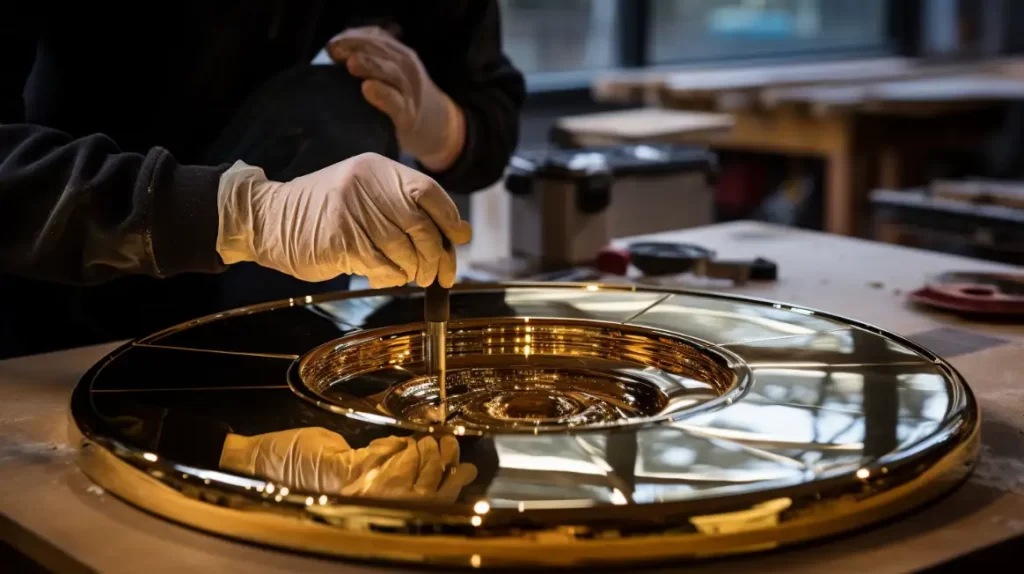
Applications and Use Cases
You can shape brass into objects that are both beautiful and functional. I’ll show you numerous ways you can use and apply brass.
Brass finishes in home decor.
Brass is a popular choice for home decor because of its warmth and elegance. People use brass in homes all around the world. From doorknobs with a polished finish that sparkles to antique brass chandeliers that exude vintage charm.
Brass finishes in home decor include:
- Lighting fixtures can be anything from wall sconces and chandeliers to large, elegant wall sconces. They are all focal points for living spaces.
- Brass bathroom fixtures and faucets, in satin or brushed brass finish, add a touch of luxury to your daily routine.
- Accents on furniture, such as drawer pulls or table legs, can add a touch of sophistication.
Brass finishes can transform ordinary objects into stunning statement pieces that enhance the aesthetics of any room.
Use of musical instruments
The world of music is a fan of brass’s unique acoustic qualities. Brass is responsible for the resonant sound of many musical instruments.
Musical Instruments Feature:
- Wind instruments like trumpets or saxophones produce rich, resonant tones.
- French horns (and tubas): these instruments’ finish can affect sound and aesthetics.
- Detailing on stringed instruments, such as tuning pins on guitars.
Brass is a versatile material that can affect not only its appearance but also its sound.
Jewellery and Fashion Accessories
Brass is a popular metal in jewelry and fashion. Designers love its malleability and range of finishes.
Use of jewelry and fashion includes:
- Brass earrings, necklaces, and bracelets have a golden color that mimics precious metals.
- Brooches with intricate designs that show off the detail of brass craftsmanship.
- Brass finishes make fashion accessories like belt buckles or bag clasps stand out.
Brass is a material that offers affordability and elegance. It’s a favorite in the fashion world.
Applications for Industrial and Architectural Applications
Brass is more than just beauty. It’s about strength and functionality. Brass is popular in industrial and architectural applications because of its robustness.
Industrial uses and architectural uses include:
- Railings and fences are essential in public areas, where durability is crucial.
- Architectural accents like window frames and handles on doors combine aesthetics with functionality.
- Machines and equipment often have brass components, especially when anti-corrosion properties are essential.
Brass is a reliable and stylish material that can be used for a large building facade and as a minor component in an industrial application.
Brass finishes have many advantages.
We have learned to appreciate the many benefits of brass finishes over the years, and I am eager to share them with you. Understanding the benefits of brass finishes is a great way to learn, whether you are a discerning customer like Jack Garcia or just starting in metal fabricating.
Aesthetic Appeal
Brass’s Aesthetic Appeal is one of its most outstanding qualities.
- Brass is a warm golden color that adds elegance to any product or space.
- Brass can be polished, antique, satin, or have a satin finish. It can appeal to many aesthetics, from sleek and modern to rustic and vintage.
- The pieces are given a unique character by their ability to age gracefully.
Durability and longevity
Brass stands out in an age where disability is the norm. Its Durability and Longevity are unmatched.
- Brass is naturally resistant to corrosion. Brass is resistant to corrosion, whether exposed in the air or underwater.
- Brass products are durable and resistant to wear. They are, therefore, ideal for environments with high usage.
- It is a metal that not only lasts but thrives. It becomes more beautiful with age, which makes it the perfect choice for structures and heirloom pieces meant to endure.
Easy Maintenance
Many people find it hard to believe that a beautiful metal can also be low maintenance. Brass is easy to maintain.
- Most brass finishes, especially the lacquered ones, need minimal maintenance. A wipe with a dampened cloth will often suffice to keep them shiny.
- If tarnish appears on the unlacquered piece, you can easily clean it using cleaning agents commonly found in stores or natural solutions such as vinegar and salt.
- Anti-microbial properties reduce the need to clean aggressively, making it an ideal choice for frequently touched surfaces.
Versatility of Design
Brass is a versatile metal known for its adaptability in design, and it fits countless applications.
- The material’s malleability allows for complex patterns and designs, so it’s a favorite with artisans.
- This metal can adapt to a wide range of design styles, whether the minimalism of a satin-finished door handle or an antique brass chandelier with ornate details.
- Brass is a versatile metal used for everything from industrial components to jewelry.
Maintenance and Care
Each piece of brass that leaves our facility is a work of art. With the proper care, it will continue to shine brightly. I am a brass fabricator and would like to share some tips to help maintain your brass pieces’ beauty.
Daily Cleaning Tips
Regular care enhances the quality of brass items. What you can include in your Daily Cleaning Routine:
- Remove fingerprints or dust from the brass surface using a soft, non-lint cloth.
- You can use a mild soap and warm water to remove minor spots or streaks. Rinse immediately with water to avoid water spots.
- Use abrasive or scrubber materials to prevent scratching the brass surface.
How to Prevent Tarnishing and Discoloration
Brass, over time, can develop a patina. If you want to keep the original luster of your brass but don’t like this natural process, here are some tips on preventing tarnish.
- Follow the instructions of the manufacturer to apply a thin coat of brass polish. This will increase the shine and provide a protective coating against tarnish.
- Consider applying a clear coat to brass objects that aren’t touched or used regularly. This will create a barrier between the brass and air, which are the primary agents that cause tarnish.
- Handle brass objects with clean hands. Our skin oils and acids can accelerate the tarnishing of brass.
Scratches and Dents: Home Remedies
Sometimes, life happens, and your brass pieces may have minor imperfections. But don’t worry! Here are some remedies for scratches and dents:
- Use ultra-fine steel or microfiber cloths to buff away shallow scrapes in the direction of the grain. After cleaning, apply brass polish to restore the shine.
- A professional can refinish the surface or use a brass filler for deeper scratches. Follow the instructions provided by its manufacturer.
- You can gently hammer out minor dents from the backside. It is best to consult with a professional restorer for antiques or valuable items.
Safe Storage Solutions
Proper storage will ensure that your brass items stay in top condition, whether it is heirloom jewelry or a cherished musical item. How to Create Safe Storage Solutions
- You should store brass items in a dry, well-ventilated area. Brass is corroded and tarnished by humidity.
- Wrap things not used daily in soft tissue paper or cloth. Wrapping them in soft materials or acid-free tissue paper will protect them from dust, scratches, and other damage.
- Compartmented storage boxes with soft linings are ideal for jewelry and other smaller items. They will prevent things from rubbing against each other.
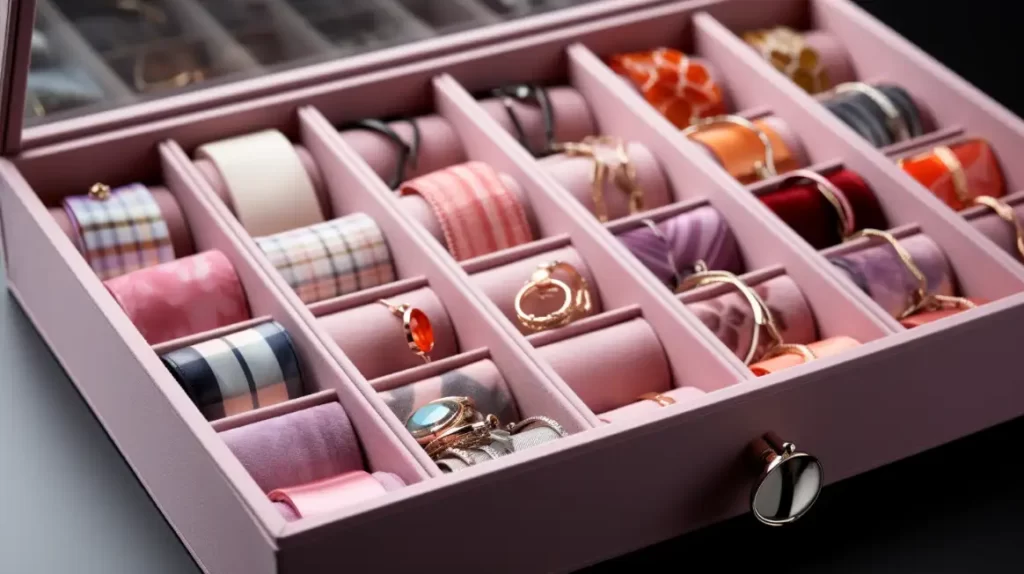
Health and Environmental Impact
We at Shengen are passionate about brass’ beauty and usefulness. Still, we also want to understand and share its impact on the health and environment. Understanding the broader implications of materials we use daily in today’s world is essential. Let me shed some light on the antimicrobial properties of brass and its environmental impact during production.
Brass and its Antimicrobial Properties.
Brass has antimicrobial properties, which is a lesser-known but fascinating attribute. What does this mean to us?
- Natural Defense: Brass surfaces eliminate bacteria and viruses that they come in contact with. The copper in the alloy is responsible for this self-sanitizing action. Copper ions can disrupt cell membranes and render microbes inactive.
- Applications: Due to global health issues, brass is gaining popularity for high-touch surfaces. Consider doorknobs and handrails in the healthcare industry. Brass can reduce the spread of pathogens and make environments safer.
- This is not a replacement: While brass provides an additional layer of protection, it does not replace regular cleaning and hygiene practices.
Environmental considerations in production
As a responsible manufacturer, we are always aware of our production processes’ impact on the environment. What you should know is:
- Recyclability:Brass is 100% recyclable, and its properties do not degrade after multiple recycling cycles. Repurposing old brass items into new products is possible, reducing the need to extract virgin materials.
- Resource management: At Shengen, we have integrated water- and energy-saving methods into our production lines. Cooling systems, for instance, recycle water to cut down on waste.
- Lower Emissions: We consistently strive to improve furnaces and decrease emissions during the brass melting and casting processes. This conserves energy and reduces the carbon footprint.
- Sustainable Sources: We are aware of the origins of our raw materials. We take steps towards sustainable production by ensuring our suppliers follow responsible mining practices.
Bronze vs. Brass: Understanding the Differences
Brass and bronze are often confused due to their similar aesthetics. Still, they are different alloys with unique compositions and characteristics.
- Composition:Their primary alloying elements are the fundamental difference. As you may already be aware, brass primarily comprises copper and zircon. Bronze is an alloy made of copper and tin.
- Color Variation: Both have a warm and lustrous glow but are slightly different in color. Zinc tends to give brass a more vibrant, yellowish-gold color. Tin tends to give bronze a more reddish brown hue.
- Mechanical properties: Both metals are durable and robust, but their alloying elements provide them with specific strengths. Brass is a malleable metal, making it perfect for intricate designs. Bronze is more complex and valued for its strength. People frequently use it to craft statues or bearings that need to be durable.
- Corrosion Resistant: Both metals are resistant to corrosion in different contexts. Brass is particularly resistant to saltwater corrosion and, therefore, preferred for marine uses. Because of its tin content, bronze tends to be more corrosion-resistant under atmospheric conditions.
Brass Finishing: Economic Impact
The brass industry plays a pivotal role in the complex dance of global economics. Brass finishing is more than just achieving a gleaming gold hue. It encompasses an entire realm of economic activities that have wide-reaching effects. As a significant player in the brass industry, Shengen has seen first-hand the economic ripples caused by brass finishes. We’ll explore the economic landscape of the brass industry and its influence.
Global Brass Industry Overview
The brass industry’s vastness contributes to the global economy in a significant way. Here’s an aerial view.
- Growing demand: With an ever-expanding range of applications, from home decor to automotive parts and aerospace components, the need for brass has steadily increased. The growth relates to urbanization, increased disposable incomes, and expanding industries in emerging markets.
- Employment: Brass finishing is an art as well as a science. Brass finishing is a precision-oriented process that requires skilled labor. It also creates significant direct and indirect employment worldwide. It is a primary job creator in regions like China with a large manufacturing base.
- Addition of Value: The finishing of brass adds a great deal to the value. The value added by brass finishing translates into higher profits for producers and better consumer products. Brass goes beyond being a metal; it becomes a symbol of artistry and utility.
Major markets and producers
Brass is a globally recognized industry, but certain regions or nations are more innovative, have a higher production volume, and stand out for quality.
- Asia: Asia, led by China, is the dominant force in brass. Shengen, our brassware brand, is a testimony to China’s dominance and expertise in this domain. India’s rich brass craft history is also significant, particularly in decorative and ornamental brass items.
- Europe: Brass is a vital industry in countries like Germany and France, focusing on artistic creations and industrial applications. They often set benchmarks for brass finishing with their advanced technologies.
- North America: With its large industrial base, the United States has a high demand for brass components, particularly in industries like aerospace, automobiles, and construction. The local industry and imports drive much of the global brass market.
- Emerging Markets: Regions such as Africa and South America are becoming significant players despite not being traditional heavyweights. This is due to the rapid growth of their local industries and increased infrastructure projects that require brass components.
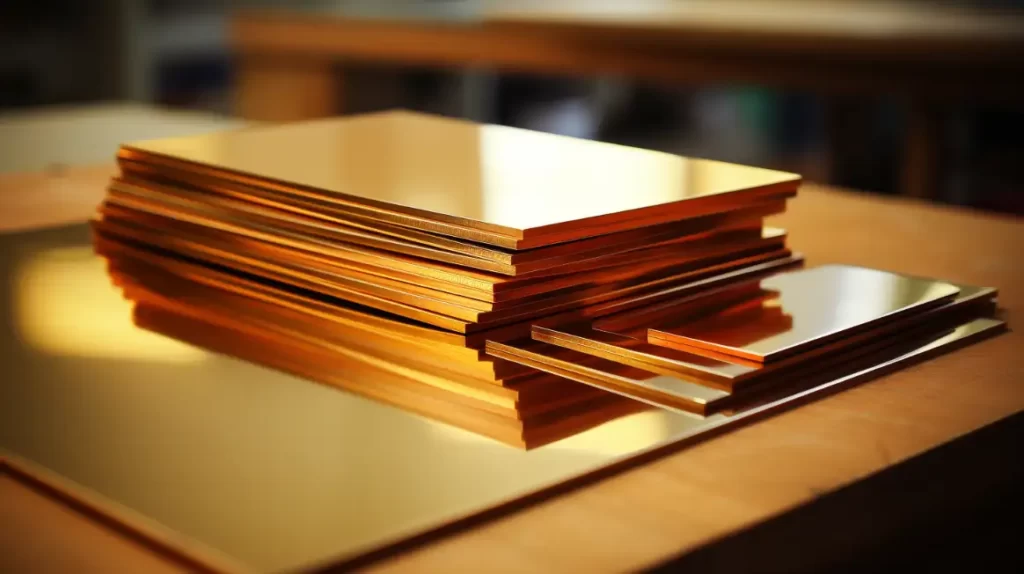
Future Trends
Brass fabrication is not static, as many other industries are. It’s evolving, adapting, and ever-forward-looking. We’ve been leading the way in these changes at Shengen. We are constantly pushing the limits and setting the pace. Looking into the future, I see some exciting changes that will change how we work and perceive brass. Let’s explore some of these Future Trends.
Sustainable Sourcing & Production
Sustainability is not just a buzzword. It’s the core of modern manufacturing. Brass is doing its part to help the world tackle the environmental challenges.
- Upcycling and Recycling: Because brass is naturally recyclable, there is a growing tendency to use reclaimed metal in production. It saves resources and reduces energy consumption in extracting and refining new metal.
- Ecological Processes: Efforts are underway to reduce waste and pollution in the production process. This includes optimizing machinery, recycling water for cooling systems, and using less carbon footprint methods.
Innovative Finish Applications
Brass is a beautiful metal. The future of brass is in the Innovative Finish Applications, which go beyond looks.
- Bright Surfaces:Imagine brass surfaces that can change color with temperature or display patterns when touched. These innovations combine aesthetics with technology and are just around the corner.
- Durable nano-coatings: These finishes are microscopic and resist scratches, tarnish, and even microbial development without affecting brass’s natural luster or feel.
The Technological Advancement of Brass Crafting
Brass Crafting will continue to be traditional, but technology will play a more significant role.
- 3D printing: Although traditionally associated with plastics and other materials, advances are now making it possible to print 3D with metals, including brass. This allows for designs and intricate details that were previously impossible.
- AI & Automation: At Shengen, we are already harnessing AI to optimize our production lines and ensure precision and consistency. Future trends indicate even more integrated systems where AI is used not only in manufacturing but also for design and quality assurance.
- Virtual Reality and Augmented Reality: These technologies will revolutionize how designers and clients view and customize brass products.
Conclusion
Brass finishes are much more than a simple process of beautification. Brass finishes improve the functionality, durability, and value of brass components. Shengen’s commitment to delivering top-notch products requires us to pay attention to all details, including brass finishes. We appreciate you trusting us with the fabrication of your sheet metal. We promise to shine, just as the brass finishes that we produce.
FAQs:
What are the differences between brass finishes?
We commonly use visual cues to distinguish between different brass finishes. Satin brass is softer and matte, while polished brass is high-gloss. Antique brass has an aged look, usually darker and with a patina. Professionals or experienced retailers can provide clarification if you are still determining.
Does the durability of different finishes differ?
There is. The inherent durability of Brass remains constant, but the finish impacts its resistance to wear and corrosion. Lacquered brass, for example, has a protective coating that makes it more resistant to deterioration and tarnishing. While unlacquered brass is beautiful, it may tarnish more quickly but can be polished to restore its original luster.
Can brass finishes cause allergies?
People regard brass as hypoallergenic. Some people may be allergic to zinc or copper, which are metals that are combined to make brass. It’s important to know this if you make jewelry or other items in close contact with your skin. If you have any reactions, consult a dermatologist.
How often should brass be cleaned and polished
It depends on how often you use the item and its location. We recommend wiping them down weekly with a soft towel for things like jewelry or door handles that people touch often. However, cleaning decorative items every month or quarter may only be necessary in a controlled environment. When you notice that your things are dull or tarnished, polishing them is a good idea.
Can you restore brass items yourself?
Absolutely! You can restore brass with various household items. A favored technique involves mixing baking soda and lemon juice in equal measures. You can then apply this paste to tarnished brass. Let it sit on the brass for 30 minutes before rinsing and buffing dry. Always test on a small area to ensure it won’t harm the finish.
More Resources:
Long-Term Availability of Copper – Source: International Copper Study Group
Brass Demand Growth – Source: Linkedin
Environmental Impact of Brass Production – Source: Dahlstromrollform
Hey, I'm Kevin Lee

For the past 10 years, I’ve been immersed in various forms of sheet metal fabrication, sharing cool insights here from my experiences across diverse workshops.
Get in touch

Kevin Lee
I have over ten years of professional experience in sheet metal fabrication, specializing in laser cutting, bending, welding, and surface treatment techniques. As the Technical Director at Shengen, I am committed to solving complex manufacturing challenges and driving innovation and quality in each project.

